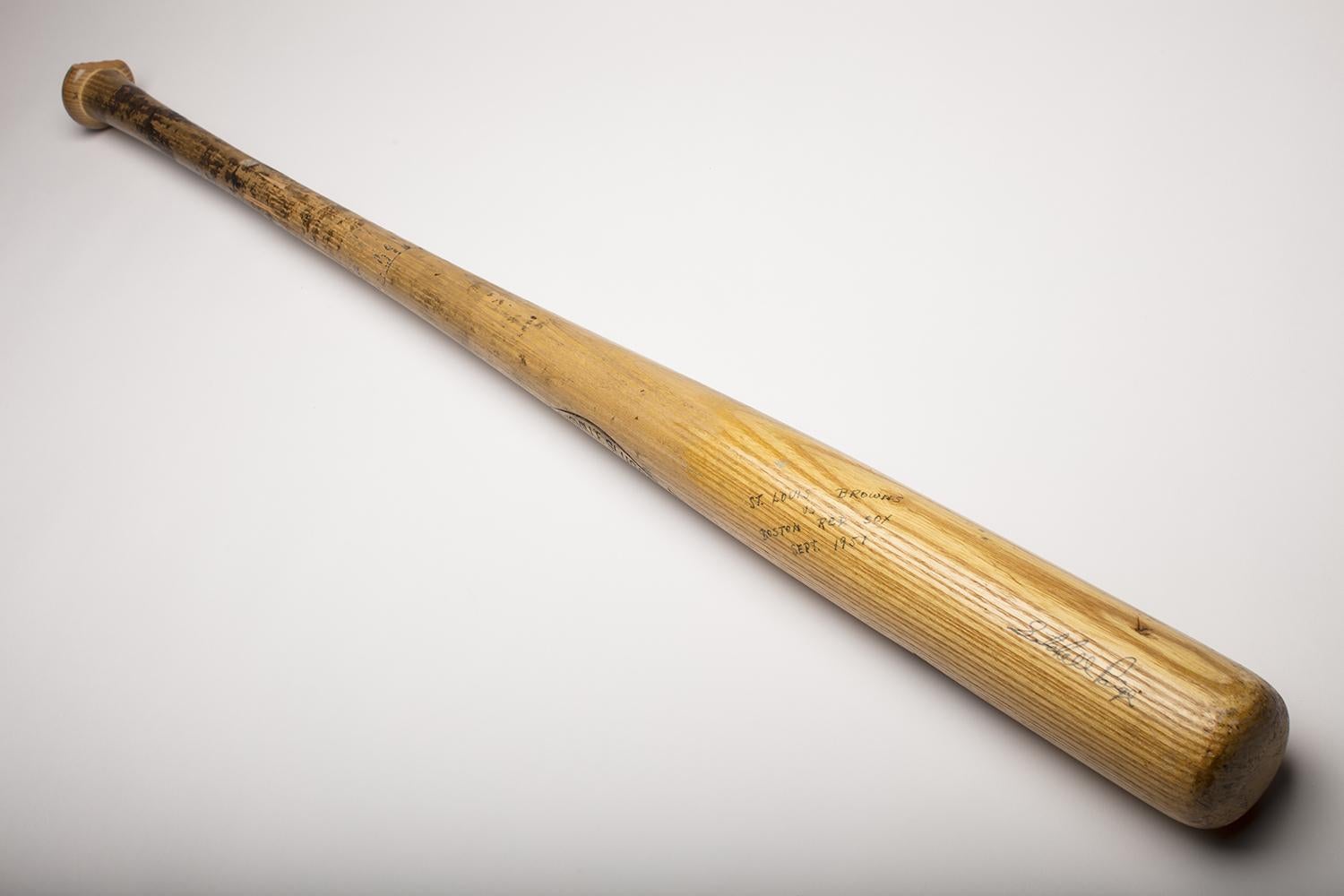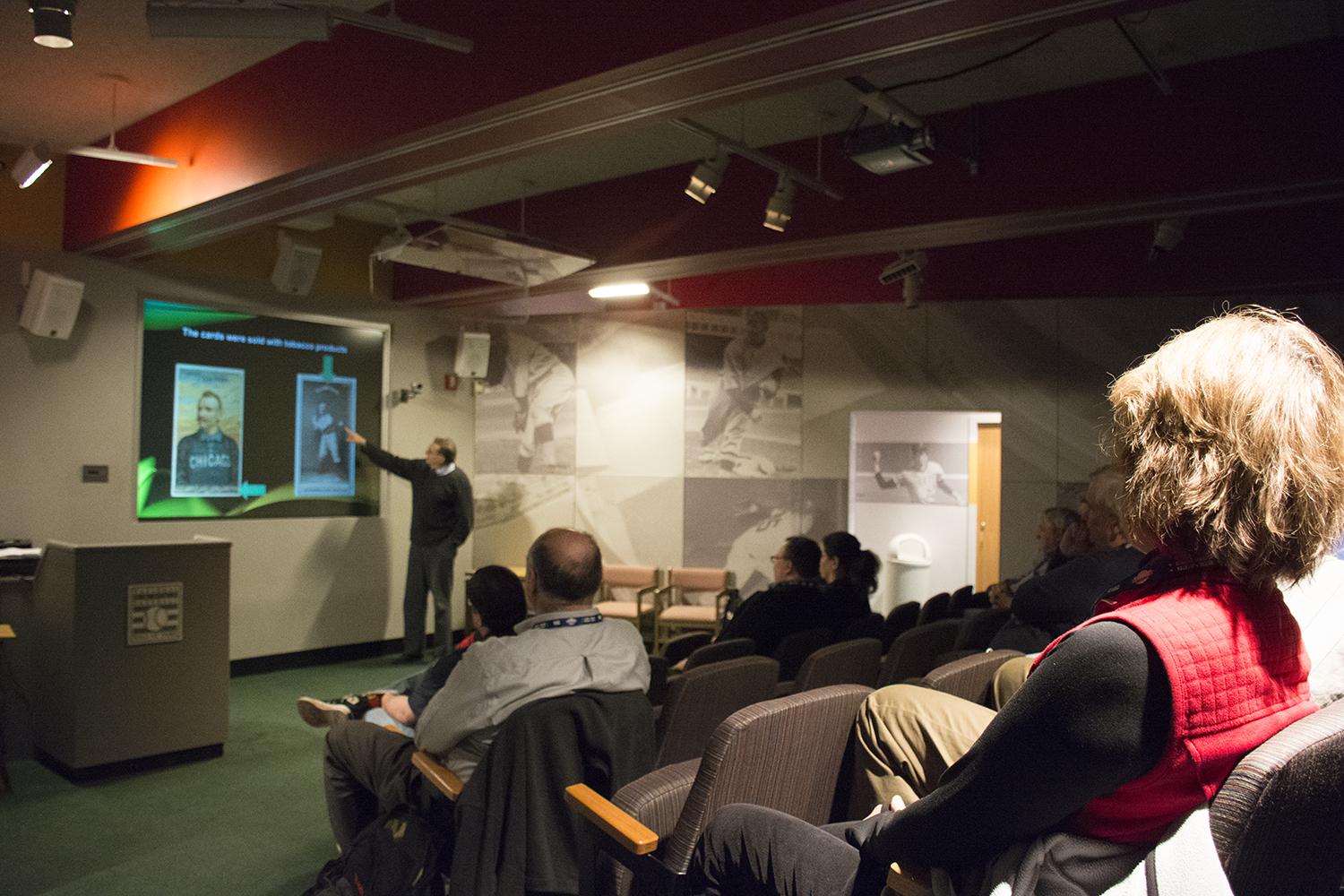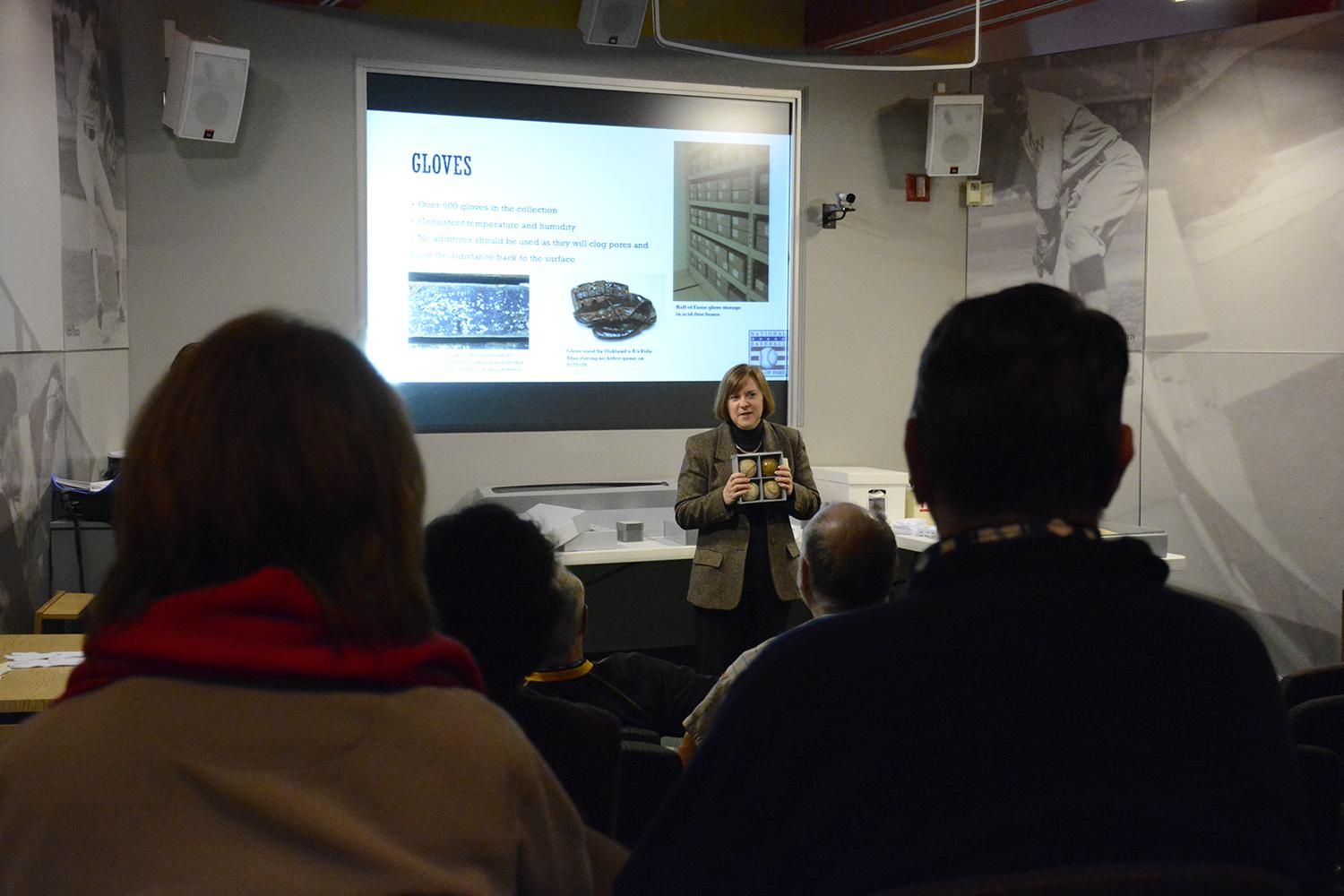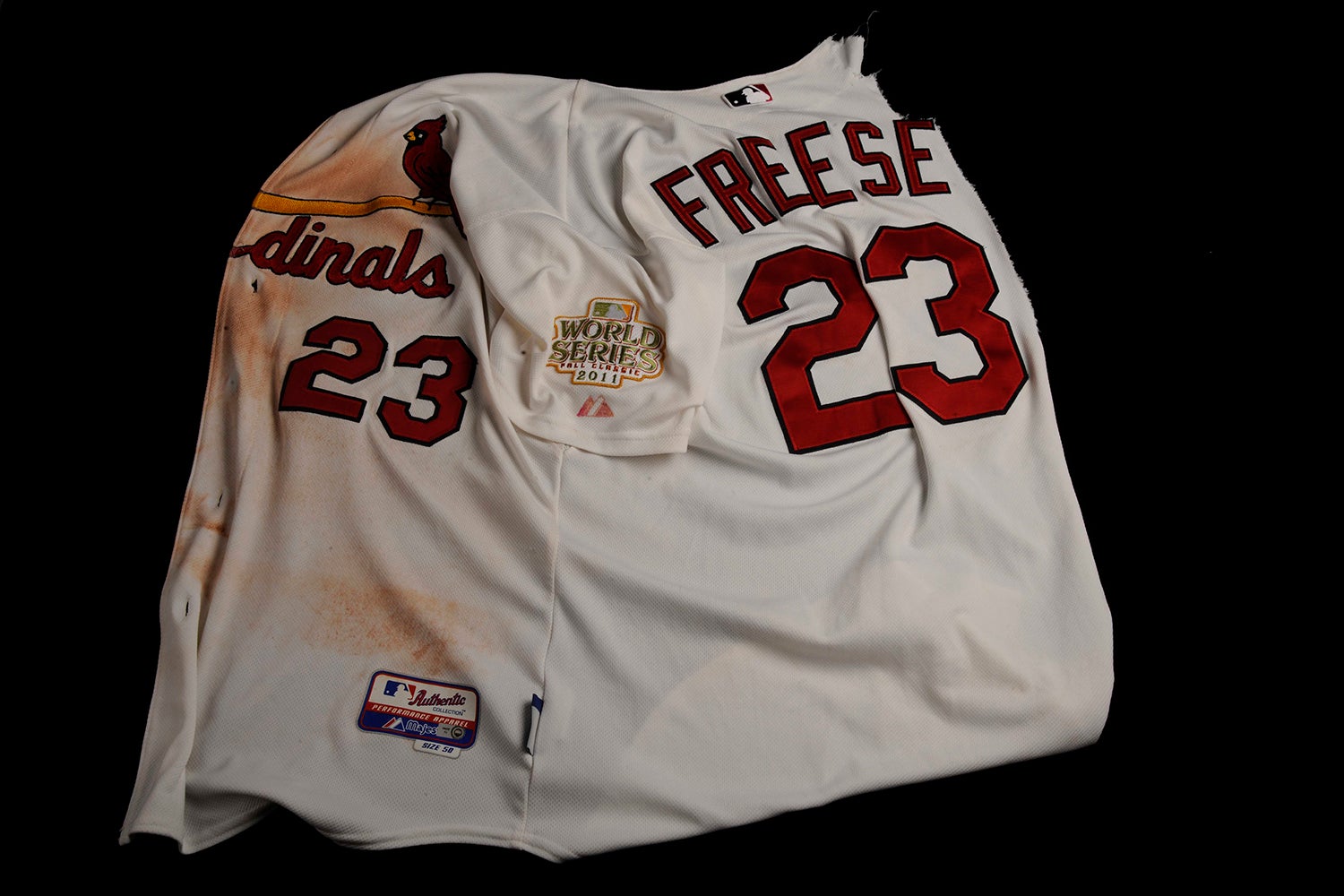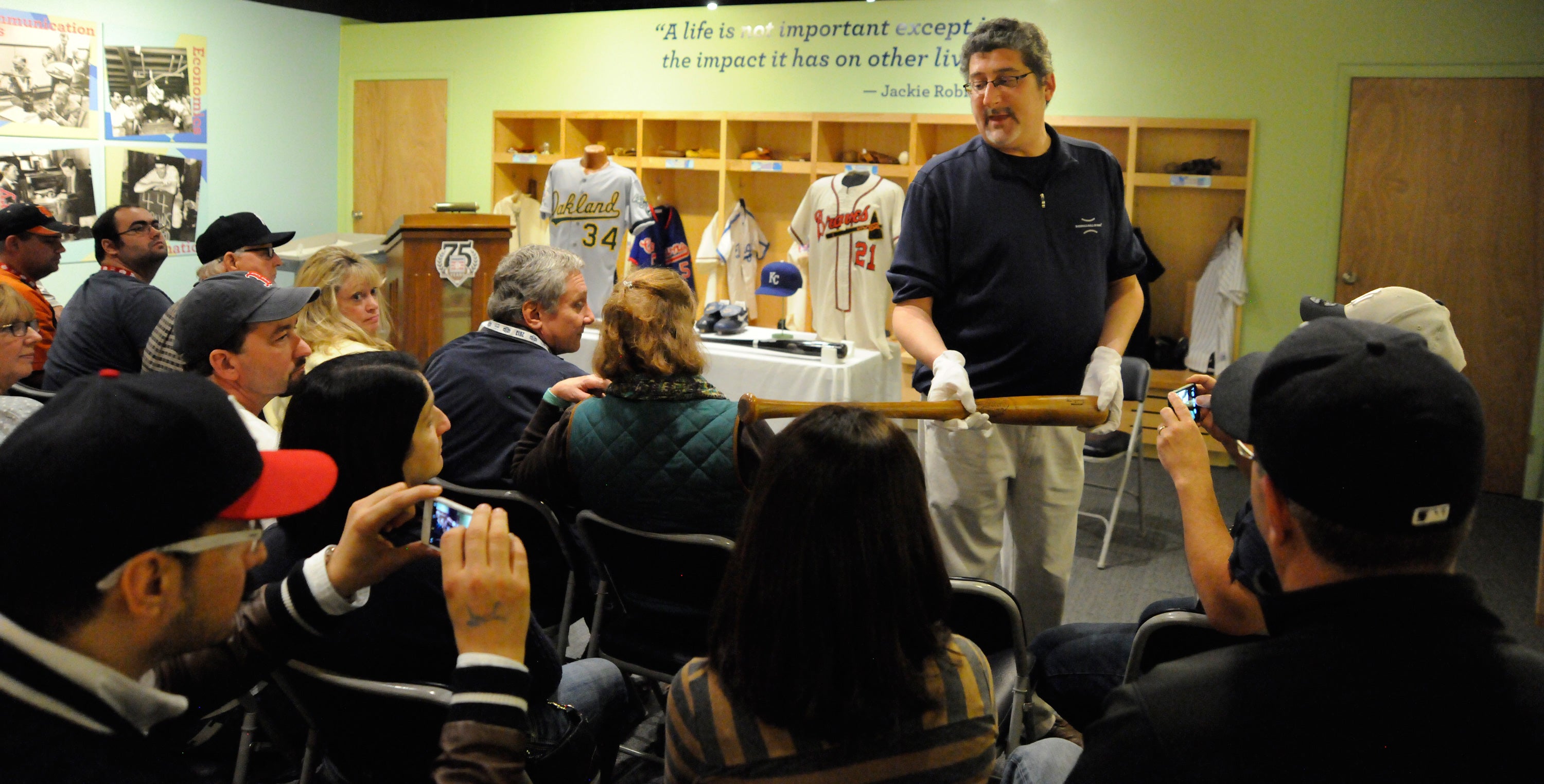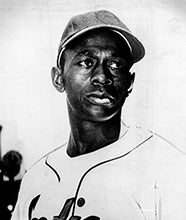- Home
- Our Stories
- Museum’s Care and Conservation Workshop Shows Fans the history of the game
Museum’s Care and Conservation Workshop Shows Fans the history of the game
Baseball is a game full of excitement, passion and emotion. During the course of nine innings, fans can witness everything from diving catches to celebratory bat flips to slides that shower a player with dirt.
The artifacts from those games tell the story of the National Pastime. But the story becomes even more vibrant when those artifacts show the wear-and-tear, use and even damage from those games.
It’s the dirt on the bottom of Albert Pujols’ spikes that show his journey to over 600 doubles. Or the rip in David Freese’s Cardinals jersey after his Game 6 walk-off homer that shows the emotion of his teammates as they lived to see Game 7. What may seem dirty or flawed to some, to others tells a baseball narrative.
Keeping these artifacts in the same form as the day they are received is part of the Hall of Fame’s mission. A continuation of that mission is to inform the public about how to properly preserve artifacts of their own – whether they choose to donate them to the Museum’s Collection or keep them as part of a treasured personal collection.
In 2016, the Hall of Fame launched its’ inaugural Care and Conversation Workshop to educate baseball fans on how the Collections team in Cooperstown preserves the tens of thousands of artifacts that live at the Hall of Fame. The Care and Conservation Workshop returns in 2017 on April 28-29, allowing fans to experience the behind-the-scenes story of artifacts at the Baseball Hall of Fame.
Hall of Fame Membership
There is no simpler, and more essential, way to demonstrate your support than to sign on as a Museum Member.
“The Care and Conservation Workshop will allow participants to converse with HOF staff, an archival product provider and a conservator regarding the proper methods and techniques to properly house, preserve and display baseball-related material,” said Director of Collections Sue MacKay. “Knowledge of these points are as important as knowing the history of objects and the goal of the workshop is to educate participants about responsible ownership and maintenance of their own collections.”
One of the artifacts used as an example at last year’s Care and Conservation Workshop was a cracked Louisville Slugger bat used by Ted Williams. The split in the bat shows not just the intensity with which Williams played the game, but the beginning of what would be a profound respect he had for the talent of Negro Leagues players.
On Sept. 14, 1951, former Negro League pitcher Satchel Paige of the St. Louis Browns struck out Williams on a change-up in the bottom of the eighth inning. Although the slugger had hit a home run in the second inning to drive in Dom DiMaggio, and a single in the sixth inning, Paige caught him completely off guard, as he was looking for a fastball.
He consequently slammed his bat on the railing that led down to the dugout, resulting in a crack right down the middle of the bat’s handle.
“I’ve never seen anything like it in the big leagues. He was sore because I crossed him up,” Paige said of Williams’ reaction to the Boston Globe. “He isn’t hitting any home runs off me. If he ever gets any off me, they’re going over that left field wall.”
Fifteen years later, Williams would use his Hall of Fame Induction Speech to advocate for the induction of Negro Leagues players. And five years after that, Satchel Paige would be the first Negro Leaguer to enter the Hall.
Last year, the Hall of Fame’s Collections team showed Workshop participants how to keep cracks like these from expanding due to changes in humidity and temperature. In the case of the Williams’ bat, archival twill tape was used to keep the crack from getting wider. In addition to this artifact, the Workshop featured informative sessions on how to preserve baseball cards, photographs, scrapbooks, jerseys and more. The goal is to preserve artifacts as a means of preserving baseball history.
“Williams flung the bat towards the rack,” Boston Globe sportswriter Clif Keane said of Williams’ frustration. “He still wasn’t satisfied, so he smashed it on the floor of the dugout. That ended the bat’s worth for good.”
Contrary to Keane’s opinion, the Hall of Fame will gladly take, and preserve these ‘worthless’ artifacts for all time.
Alex Coffey is the communications specialist at the National Baseball Hall of Fame

